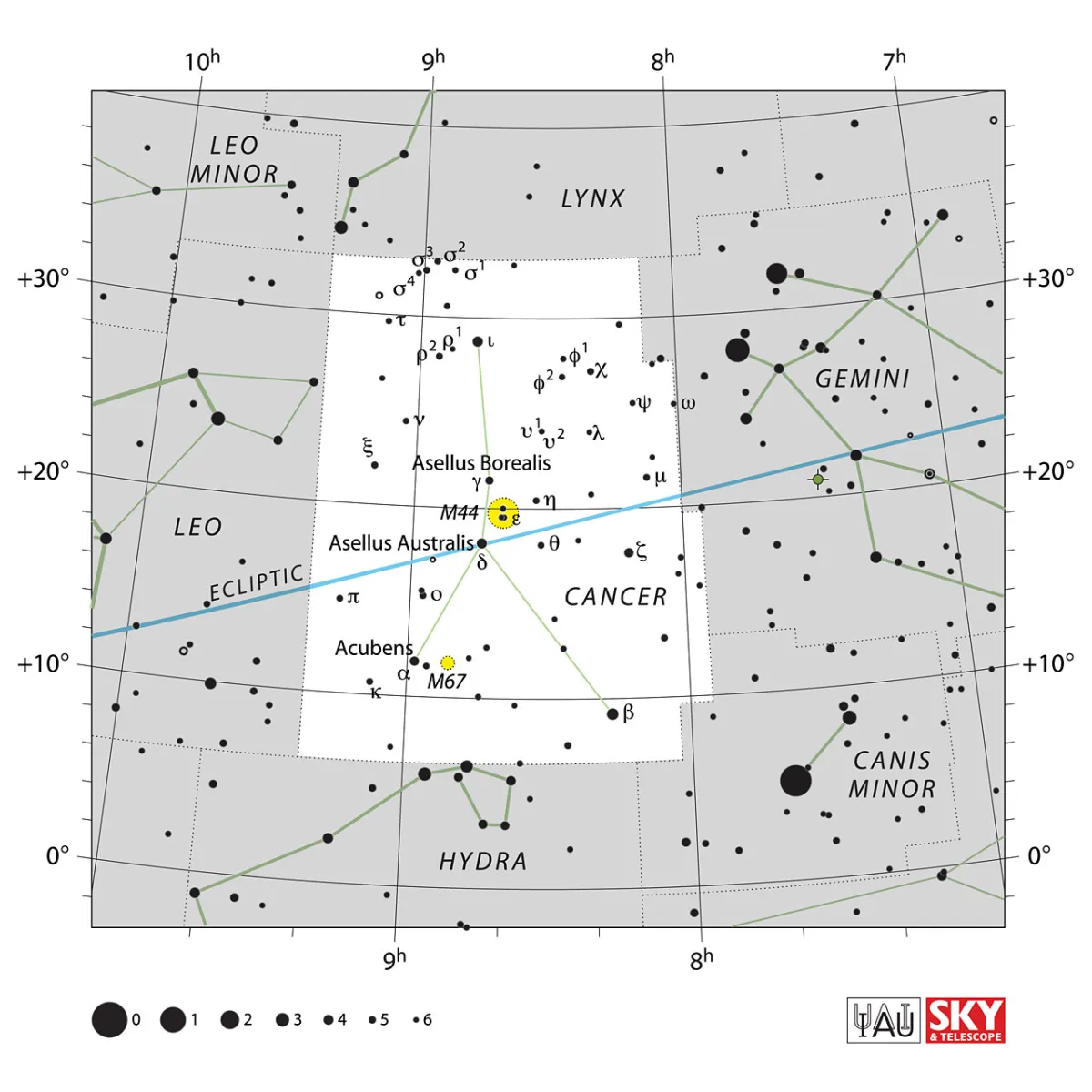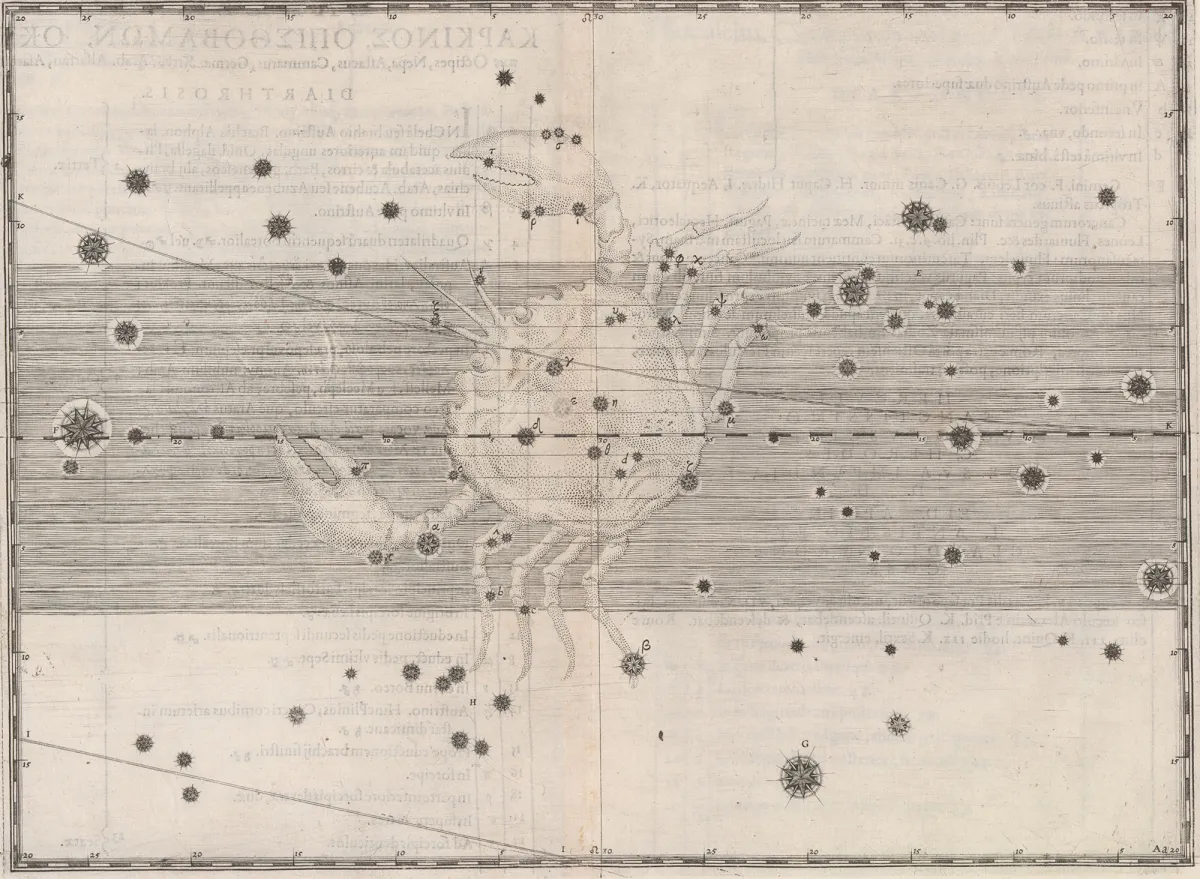Constellation Cancer (Crab)

Properties
The constellation is located between Leo and Gemini on the ecliptic and is rather inconspicuous, because no star is brighter than the 4th magnitude. You can easily recognize it, however, by the somewhat nebulous spot in the sky, which is caused by the open star cluster Praesepe. The constellation extends over an area of 506 square degrees and culminates around midnight on January 30th. [9, 15]
| α Cnc | Acubens, Sertan, Sartan |
| β Cnc | Altarf, Al Tarf |
| γ Cnc | Asellus Borealis |
| δ Cnc | Asellus Australis |
| ζ1 Cnc | Tegmen, Tegmine |
| IAU Name | Cancer |
| IAU Genitive | Cancri |
| IAU Abbr. | Cnc |
| English Name | Crab |
| Culmination at local midnight | 28 January |
| Season (Latitude +0.0°) | October … July |
| Right Ascension (J2000.0) | 07h 55m 20s … 09h 22m 35s |
| Declination (J2000.0) | +06° 28' 12" … +33° 08' 29" |
| Area | 506 deg2 |
| Neighbours (N↻) | Lyn, Gem, CMi, Hya, Leo, LMi |
Deep-Sky Object Descriptions
Catalogues

Mythology and History
Heracles, son of Zeus and Alcmene, was hated by Hera throughout his life because he was an illegitimate child of her husband Zeus. In a very dangerous situation - when Heracles was fighting the water serpent - and Heracles was already seeming to be victorious, she sent a large, dangerous crab from the Lernaean swamps, which stung painfully in the heel. Hera believed that this would finally destroy Heracles, but the latter stepped on the crab and hurled it away. Hera placed the crab in the sky, in front of the northern water snake, in order to pay homage to it at least in this way. [20, 57]
In the Alfonsin Tables (planet tables created by a college of 50 astronomers on behalf of King Alfons in the years 1248-52 [6]) one finds the transcribed form Carcinus of the Greek name. Ovid also calls the cancer Octipes (eight-footed), although at best one only finds four legs on the star map. But he is also called Litoreus, apparently he was a bank crab (litus = seashore, beach, lake bank, river bank). Cicero calls him Nepa and sees in him an African scorpion. The name Lernaeus mean to say that it comes from the lernian swamps.
The German orientalist Jensen claims that this constellation is identical to the turtle, which was found in the Babylonian and Egyptian cultures as early as 4000 BC. configured. In other Egyptian records from 2000 BC. a scarab, a pill-turner, is seen here. Other names were water beetle, lobster, lobster and cancer minor. According to Julius Schiller's proposal for Christianization, it should become Saint John the Evangelist. [20]